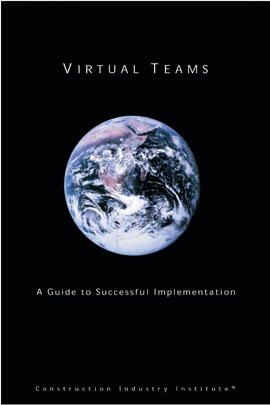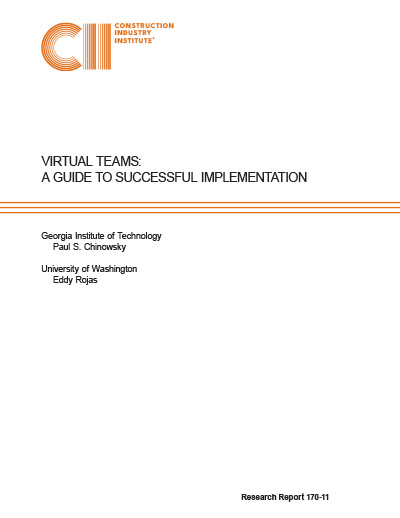
Virtual Teams: A Guide to Successful Implementation
The construction industry needs a way for project teams to electronically collaborate. With projects spread across the globe and with various geographic locations specializing in one or more aspect of a multi-layered project, the challenge is to gather and exchange information in an accurate and timely fashion while leveraging as much technology as possible. The emergence of the “virtual team,” an electronic assemblage of people in various locations who have the common project goal of success, provides the industry with opportunities, challenges, and a few barriers, all of which need to be addressed.
Virtual teams are getting increasing attention in the design and construction communities. From opportunities to integrate international teams to leveraging the best resources, companies are turning to the idea of virtual teams to transform project execution. Problems, however, range from management aspects to the social and cultural implications to rapidly advancing technology. An overemphasis on one can affect the others. Challenges such as security, systems compatibility, and appropriate technologies combine with non-technical factors and introduce complications into an already complicated project process.
CII created the Making Virtual Teams Work Project Team to study the challenges and to provide recommendations. The project team believes that virtual teaming will be standard business practice within the next five years. The construction industry must be prepared. The following pages provide a path forward to understanding the unique issues associated with virtual teams.
- Virtual teams require initial face-to-face meetings to develop a sense of “team” for their members. This sense of team establishes the mutual goals, trust, and relationships that are necessary to complete projects. (IR170-2, p. 7)
- A primary task for virtual team managers must be the frequent restatement of goals to the team to ensure that every member remains focused on the common objectives and goals.
- Technology is no longer a limiting factor for implementing virtual teams, but poor technology choices can defeat the implementation and operation of a virtual team. (IR170-2, p. 2)
- Technologies that enable collaboration can be classified in three major areas: information management, conferencing, and project management.
- Recipients and senders of electronic documents need to verify that the information transferred during a project is reliably being communicated and is secure in its transmission.
- Every organization must commit to providing each member of a virtual team with equal training. (IR170-2, p. 7)
- Provide cultural training for international teams.
- When determining work splits and the project execution strategy, focus on competencies, not geographies or organizations. (IR170-2, p. 19)
- An undeniable fact of virtual teaming is that the amount of electronic communications will increase for every member of the team. It is critical to establish communication guidelines.
Provides direction for implementing and managing a virtual team (a group collaborating via electronic media from various geographic locations) in a project management environment. This guide explains how management and IT issues common with most project teams require a different approach with virtual teams. Includes a primary checklist for implementing and managing a virtual team.


